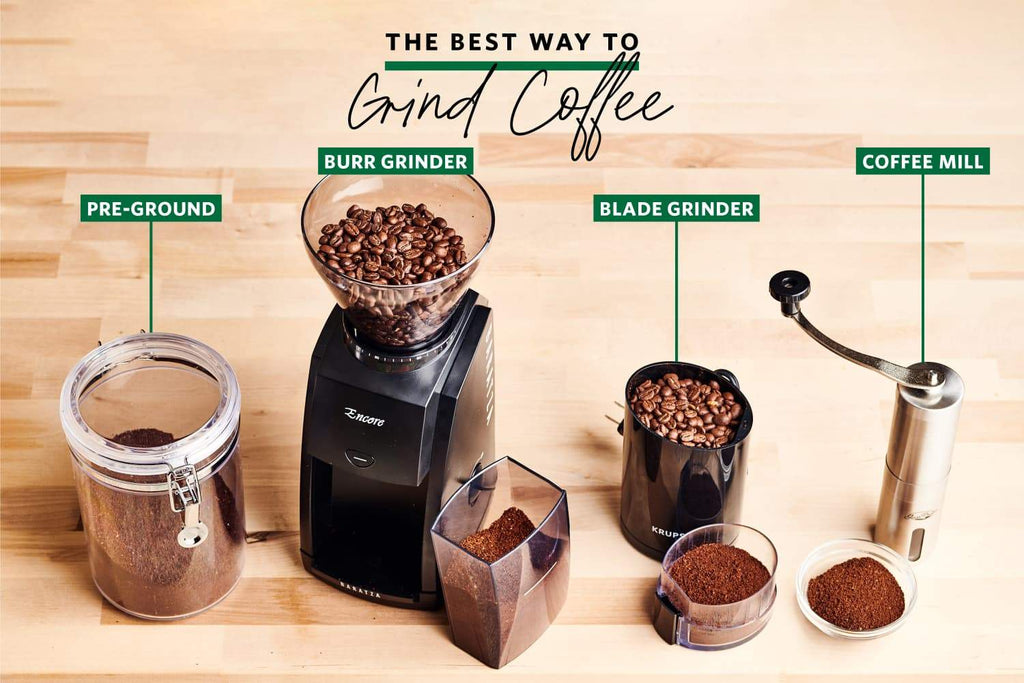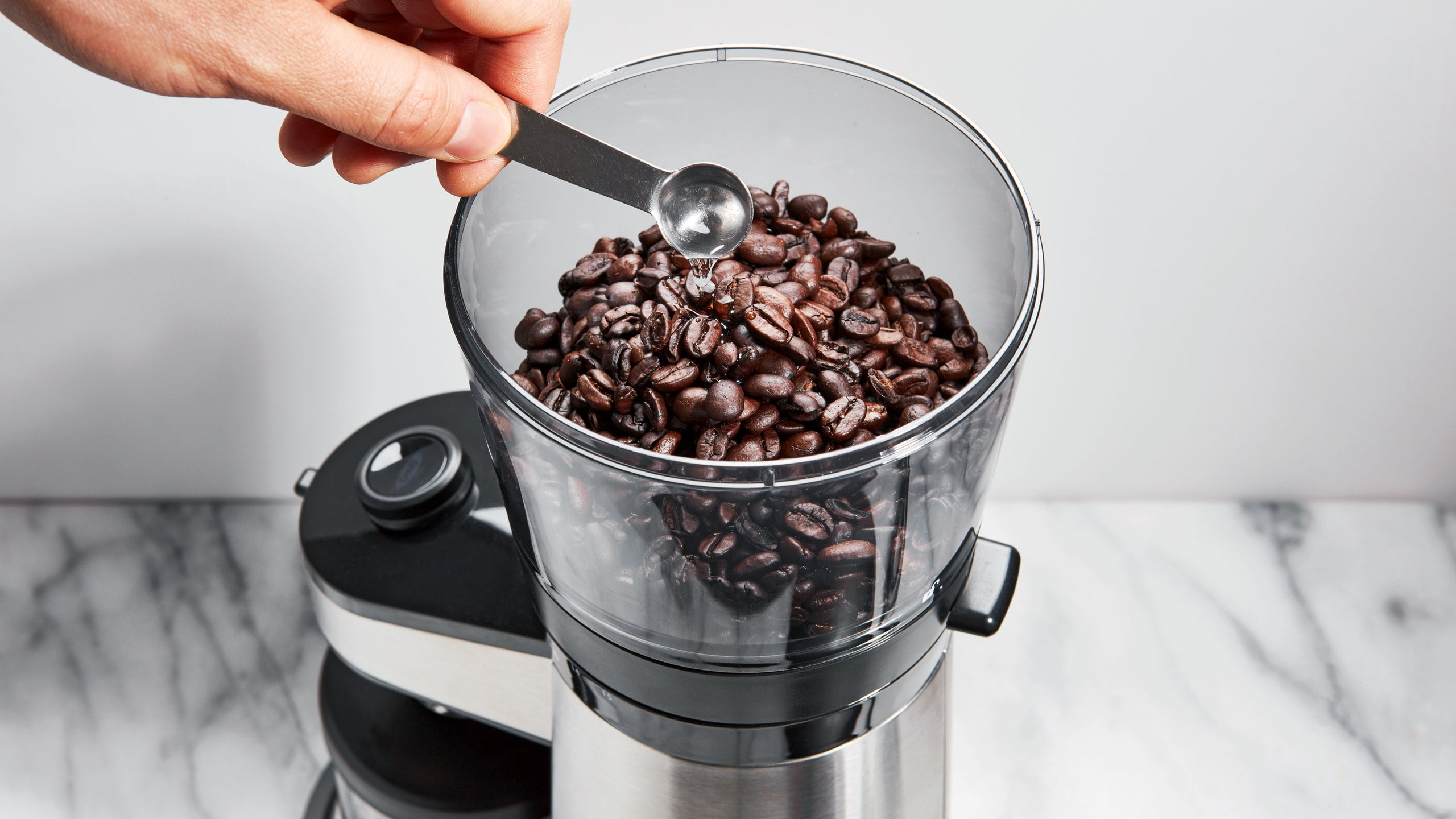If you want to open a coffee shop/you are an owner of a coffee shop. You need to make the best coffee for your customers. Customer Satisfaction is the most important part of business. If you want to quickly make tasty coffee for your coffee shop customers, use a good coffee grinder. A coffee grinder lets you choose the grind size fitting your brewing method, from fine for espresso to coarse for French press. Pre-ground coffee often loses its freshness and nuanced taste notes quickly, making a grinder an essential tool for coffee enthusiasts.

Credit: learn.bluecoffeebox.com
The Importance Of Freshness In Coffee
To experience the full splendor of coffee, freshness takes center stage. The moment coffee beans are ground is significant. Grinding beans release their rich, complex flavors and aromas. These elements propel coffee from good to unforgettable. Only by grinding just before brewing can you capture the essence and vibrancy that high-quality coffee offers. Let’s explore how grinding affects flavor and the shelf-life differences between pre-ground and whole-bean coffee.
Impact Of Grinding On Flavor
Grinding coffee beans is like unlocking a treasure chest of flavors. Two crucial factors come into play: consistency and exposure. A good coffee grinder ensures a consistent grind, making sure each particle extracts equally. This results in a well-balanced taste in every cup. On the other hand, if the grind is inconsistent, you might end up with a mix of over and under-extracted notes, which can spoil the overall coffee experience.
Once the coffee beans are ground, they reveal their inner magic, but there’s a catch. They also start to oxidize and lose freshness. To savor the freshest brew possible, it’s essential to use a good coffee grinder and grind the beans right before brewing. This practice guarantees an unbeatable flavor experience, as the flavors are preserved at their peak. So, investing in a good coffee grinder not only enhances the taste but also ensures that every cup is a delightful journey into the world of rich coffee flavors.
Pre-ground Vs. Whole Bean Shelf-life
The battle of longevity between pre-ground and whole-bean coffee has a clear winner. Pre-ground coffee might be convenient, but it loses its peak flavor quickly. Whole beans stay fresh longer, locking in flavor and aroma. They have a more robust defense against factors like air, moisture, and light that can steal freshness. To show this in detail, consider the following table:
| Coffee Type | Shelf-Life |
|---|---|
| Whole Bean | Up to 4 Weeks |
| Pre-Ground | 1-2 Weeks |
Choosing whole bean coffee and a grinder extends shelf-life and maximizes freshness. Your taste buds will thank you for the bold, intense flavors that only freshly ground beans can offer. Remember, to delight in the richest cups of coffee, keep beans whole until brew time. Ready your grinder and relish the purest expression of your coffee beans.

Credit: nusacoffeecompany.com
Types Of Coffee Grinders
Embarking on the journey of fresh coffee begins with grinding beans. The right grinder transforms beans into cups of bliss. Understand the types of good coffee grinders available to choose the best for your morning ritual.
Blade Grinders: Pros And Cons
Blade grinders are common in kitchens. They use spinning blades to chop coffee beans. Affordability is their strong suit. They’re easy to use and compact for storage. However, their grinding consistency varies.
Pros:
- Cost-effective: Great for budgets.
- Simple operation: One-button control.
- Space-saving: Fits in small spaces.
Cons:
- Inconsistent grounds: Can affect taste.
- Heat: Friction may alter flavor.
Burr Grinders: An Investment In Taste
Burr grinders are precision tools. They crush beans between two burrs. This ensures uniform size. It’s vital for flavor and quality. Burr grinders are pricier but worth the taste upgrade.
Benefits:
- Consistent grind: For optimal extraction.
- Adjustable settings: Control over grind size.
- Less heat: Preserves bean integrity.
Considerations:
- Higher cost: Investment in quality.
- Size: Requires more counter space.
Alternatives To Electric Coffee Grinders
- Alternatives to Electric Coffee Grinders are like secret levels in a video game – they unlock a world of options for those who do not own a specialized device. Getting that perfect grind for a delicious cup of coffee doesn’t always require high-tech gadgets. Discover creative solutions to turn whole beans into the ideal consistency for a brew that hits the spot.
Manual Grinding Methods
Roll up your sleeves and dive into the manual ways to grind coffee beans. With these methods, the ground adventure becomes a hands-on experience.
- Mortar and Pestle: This ancient duo works well. It provides control over the grind size.
- Rolling Pin: Use it to crush beans. A bit of elbow grease gets results.
- Hammer: A common tool that can be gentle or firm for the grinding process.
Kitchen Appliance Hacks
No manual grinder? No problem! Your kitchen hides grinding gems that can save the day.
- Blender: Just pulse it! Use the ‘grinder’ or ‘pulse’ setting for short bursts.
- Food Processor: Similar to a blender, but larger. It requires more beans in the bowl.
| Tool | Grind Control | Convenience |
|---|---|---|
| Mortar and Pestle | High | Low |
| Rolling Pin | Medium | Medium |
| Hammer | Low | High |
| Blender | Medium | High |
| Food Processor | Medium to Low | Medium |
Each tool offers unique benefits. Choose based on the grind needed and the tools at hand. Always aim for consistency. This leads to a brew that delights every time.
Understanding Grind Sizes
Did you know that your coffee’s taste starts with the grind size? Different brews need different grind sizes.
Grind size affects flavor and brewing time. Your coffee might be too bitter or weak without the right grind.
Matching Grind To Brewing Method
Choosing the correct grind size for your coffee maker is key.
| Brew Method | Grind Size |
|---|---|
| Espresso | Fine |
| AeroPress | Medium to fine |
| French Press | Coarse |
| Pour-over | Medium |
Adjusting Grind Size For Flavor
You can tweak your coffee’s taste with grind size. Make it finer for more strength, or coarser for a smoother cup.
- Fine grinds extract quickly, intensifying flavor.
- Coarse grinds extract slowly, for a clean taste.
Use a burr grinder for consistent grinds. It can help you get the same taste every time.
Does Your Coffee Routine Need A Grinder?
Imagine savoring a cup of coffee that bursts with freshness. It’s possible when you grind coffee beans just before brewing. But do you need a grinder at home for that experience? Let’s consider your coffee habits and weigh convenience against quality to decide.
Evaluating Your Coffee Preferences
Evaluating Your Coffee Preferences
Your taste in coffee sets the stage. Freshly ground coffee beans enhance flavor and aroma. Think about these questions:
- Do you crave rich, full-bodied coffee?
- Is a strong aroma important to you?
- Do you enjoy experimenting with coffee brews?
If you answered ‘yes’, a grinder fits into your routine.
Cost-Benefit Analysis of Owning a Grinder
Cost-benefit Analysis Of Owning A Grinder
Owning a grinder is an investment. Consider the following points in a simple cost-benefit analysis:
| Cost | Benefit |
|---|---|
| Initial purchase | Fresher tasting coffee |
| Maintenance | Control over grind size |
| Storage space | Experiment with various beans |
Match these against your coffee budget and space. The pleasure of a delightful coffee experience may just outweigh the costs.
:max_bytes(150000):strip_icc()/How-to-Grind-Coffee-Without-a-Grinder-3x2-1-cb7169c257894b75a485ff898d34740b.jpg)
good coffee grinder is important for a coffee shop because:
1. It helps make the coffee taste the same all the time.
2. It makes sure the coffee is fresh when it’s ground.
3. It lets the barista choose how coarse or fine the coffee is ground.
4. It works quickly and doesn’t break easily.
5. It makes customers happy because they get good coffee.
6. It saves money because it lasts a long time and doesn’t need much fixing.
Frequently Asked Questions On Do You Need A Coffee Grinder To Grind Coffee Beans
Can You Grind Coffee Beans At Home Without A Grinder?
Yes, you can grind coffee beans at home without a grinder by using a mortar and pestle, a rolling pin, a hammer, or a blender. Each method requires manual crushing or pulsing to achieve the desired consistency.
Do You Need A Coffee Grinder For Coffee Beans?
Yes, to brew fresh coffee, you need a grinder to process whole coffee beans into grounds, enhancing flavor and aroma.
What Can I Use Instead Of A Coffee Bean Grinder?
You can use a mortar and pestle, a rolling pin, or a hand mincer as alternatives to a coffee bean grinder. A blender or spice grinder also works well for grinding coffee beans.
What Is The Best Way To Grind Coffee Beans?
The best way to grind coffee beans is by using a burr grinder set to your desired coarseness. Ensure beans are fresh for optimal flavor.
Conclusion
Exploring the art of coffee making reveals one truth: a grinder is key. Freshly ground beans impart unparalleled flavor, elevating your brew. For the coffee enthusiast seeking peak aroma and taste, investing in a grinder isn’t just an option—it’s essential.
Embrace the full coffee experience; let a grinder be your ally.





